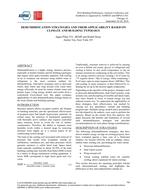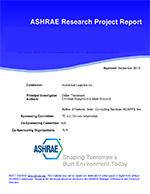Click here to purchase
District Cooling is an energy-efficient technology that can satisfy the cooling demands of regions with extremely hot climates such as the middle east. Designing and operating these plants requires accurate modeling of the existing cooling load created by the building stock connected to the central plant. During the design stage, building archetype models can be used for sizing district cooling load, whereas both the input and output uncertainties of these models have not been well addressed. This paper conducts a comparative analysis of two methodologies of building archetype development, develops an importance ranking for the input parameters of these models, and tries to quantify the uncertainty of the cooling energy output due to input value uncertainty. It develops a region-specific highrise residential archetype and compares it to the US DOE Prototype models. It also develops the parameter ranking using a global sensitivity analysis methodology. It is found that the most practical approach towards the development of building archetypes for a specific region is the development of region-specific models adapted to local practices rather than converting standard models for accuracy and computational cost considerations. It was also concluded that a set number of parameters are responsible for most of the model’s output variability. Finally, this study demonstrated the usability of the building archetype models for the hot and arid climate.
Product Details
- Published:
- 2022
- Number of Pages:
- 8
- Units of Measure:
- Dual
- File Size:
- 1 file , 1.6 MB
- Product Code(s):
- D-TO-22-C054
- Note:
- This product is unavailable in Russia, Belarus


